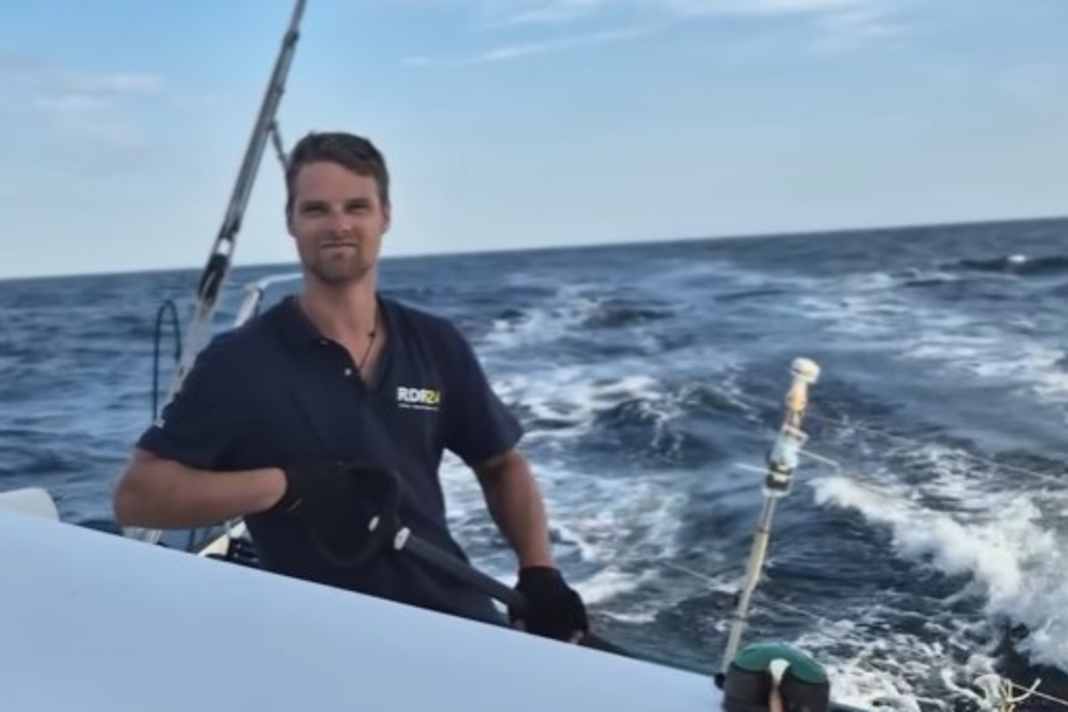In distress at sea: Why the rescue of the German man who capsized in the Caribbean almost failed
YACHT Online
· 10.01.2025





Report: Theo Kruse
Marita and Dietmar Engelhardt from Hooksiel are overjoyed: their son André returned to Europe on Thursday after a very lucky rescue from the Caribbean Sea. They embraced the adventurer at Schiphol Airport near Amsterdam. In the meantime, they had heard about the successful rescue of the four shipwrecked men and, after hours of anxiety, were able to wait for the return of their globetrotter with a little more composure. In retrospect, André Engelhardt had had a whole host of guardian angels.
Rescued with only a few clothes on
"We arrived in Curacao in shorts and T-shirts," said the professional skipper. His entire luggage and that of his three fellow sailors from Alaska, England and Sweden had gone down with the "Second Wind". By the time he left Curacao, he was no longer able to determine whether it was even possible to salvage the sunken catamaran.
"It took maybe ten minutes from the time the water broke in until we left our boat," says the sailor from Hooksiel, a member of the Horumersiel sailing club, describing what happened after returning from the Caribbean. The escape hatch of the starboard hull had broken out. A huge amount of water had flowed into the 40 x 40 centimetre opening and the catamaran - a Lagoon 42 several years old and under charter - had tilted on its side.
Cat should be transferred to a shipyard for overhaul
"We tried to seal the hole, to keep a bulkhead in front of it, but the water pressure was too great," said the skipper in charge, who was supposed to transfer the charter vessel from the British Virgin Islands (BVI) to the San Blas Islands off the coast of Panama on behalf of the owner.
A good half of the approximately 1,000 nautical mile trip through the Caribbean Sea had been completed when the escape hatch of the starboard float parted in seven to eight force winds and three and a half metre waves. "According to my information, this has happened quite often on catamarans of this type," says the trained ship mechanic from the Wilhelmshaven Waterways and Shipping Office.
After the boat capsized, the crew first rescued themselves on the catamaran, which was drifting keel-up. "The life raft was attached to the stern of the boat. We had to cut it loose in several dives," says the skipper, describing the situation.
Emergency call would almost have been dismissed as a fake call
Fortunately, the crew was able to take a Garmin emergency call transmitter with them into the life raft. Engelhardt sent the distress call into the ether via satellite. The message reached the foreman of the Horumersiel lifeboat "Wolfgang Paul Lorenz", among others. He initially thought the call was a fake message, as the name of the US owner of the "Second Wind", which he did not recognise, was displayed. However, he then passed the distress message on to his colleagues at the Bremen Maritime Rescue Centre of the German Maritime Search and Rescue Association.
They in turn verified the distress call and informed the Dutch "Kustwacht Caribikgebied" on Curacao in the Netherlands Antilles. There, the Dutch organised the search for the life raft by plane.
Accident site should not have been further away from land
Before the lucky rescue could be finally initiated, a helicopter from the "Kustwacht" had to be hoisted up to lift the shipwrecked people out of the life raft. This was only just possible, as the scene of the accident was on the edge of the helicopter's possible area of operation, around 150 nautical miles from Curacao and Aruba.
"Shorts and a knife were the only things we could take with us," says André Engelhardt. During the five-hour wait, he and his comrades-in-arms drew plenty of water from the life raft.
"We weren't afraid, because our emergency call was acknowledged after just 30 minutes. From then on, we knew that help would come," he says, playing it cool. They then left Curacao after the police investigation was completed. "We were illegal immigrants, so to speak, and first had to obtain temporary identity papers," says the man from Hooksiel, happy about his rescue.
Other spectacular maritime emergencies:
André Engelhardt works as a ship mechanic at the Wilhelmshaven Waterways and Shipping Office and in his spare time he goes on sailing trips and yacht transfers all over the world. He is a member of the Horumersiel sailing club. He completed a trip to the Antarctic just before Christmas.
Accident due to a defective escape hatch is not an isolated incident
The sinking of the "Second Wind" could be one of a series of similar disasters. Catamarans have previously suffered water ingress or even sunk because the glass of the escape hatch had come loose from the frame. The manufacturer of the hatches and the shipyards that had installed them had been warning of the danger for several years and calling on owners to have them repaired. According to YACHT's research, many cat owners may not have responded to this call to date.
It is not known whether a hatch in question was installed on the "Second Wind" and whether the owner responded to the call at the time to have the hatch checked and, if necessary, repaired.

